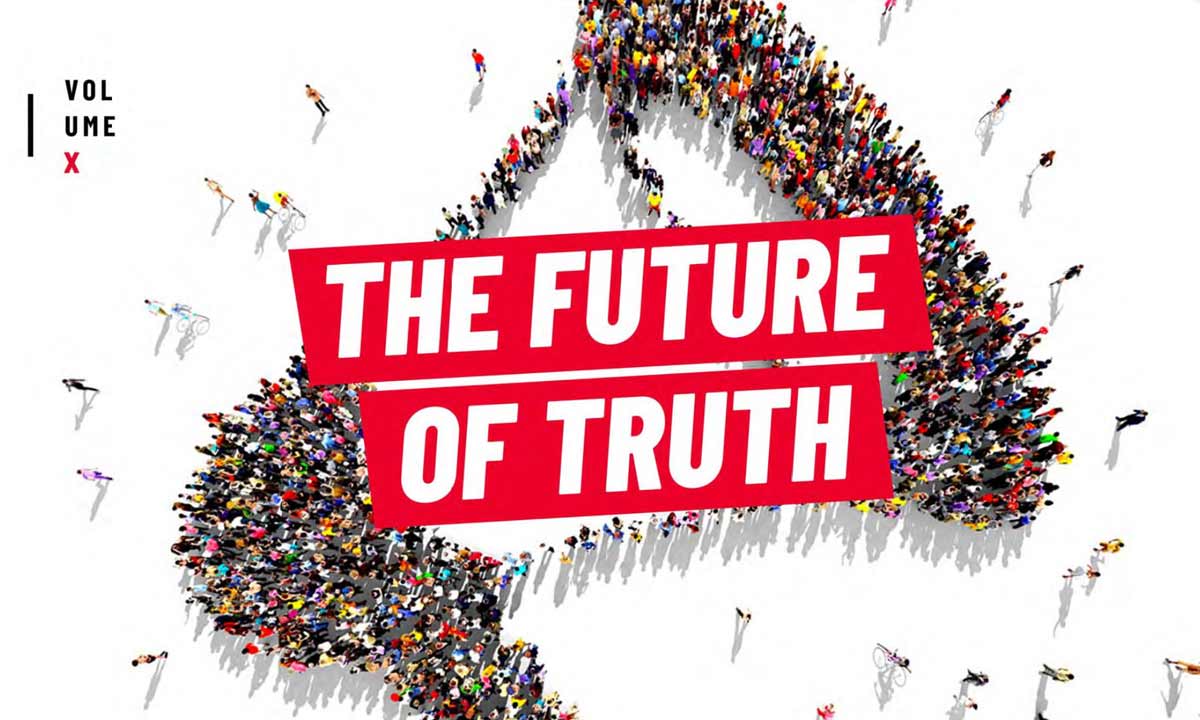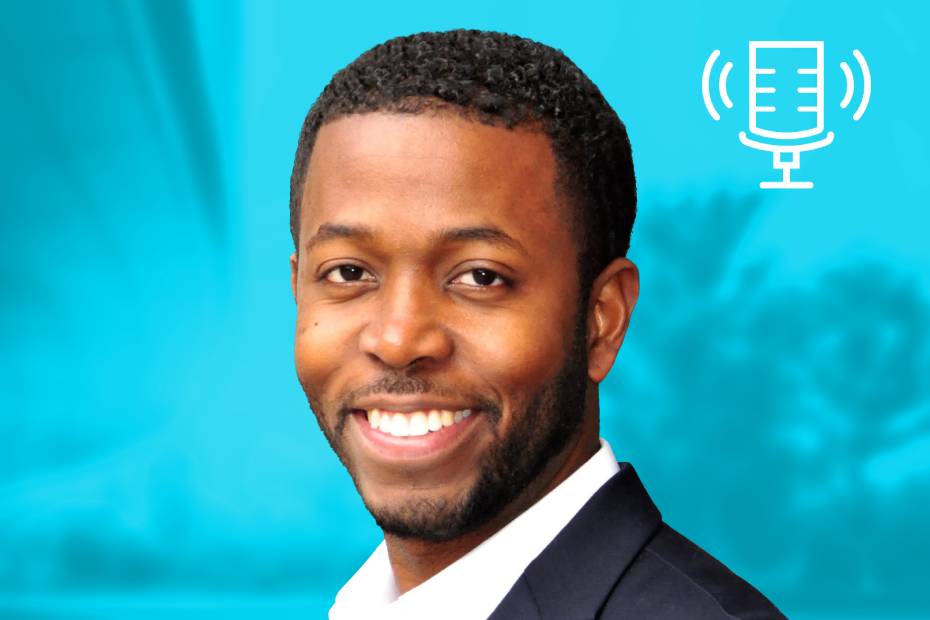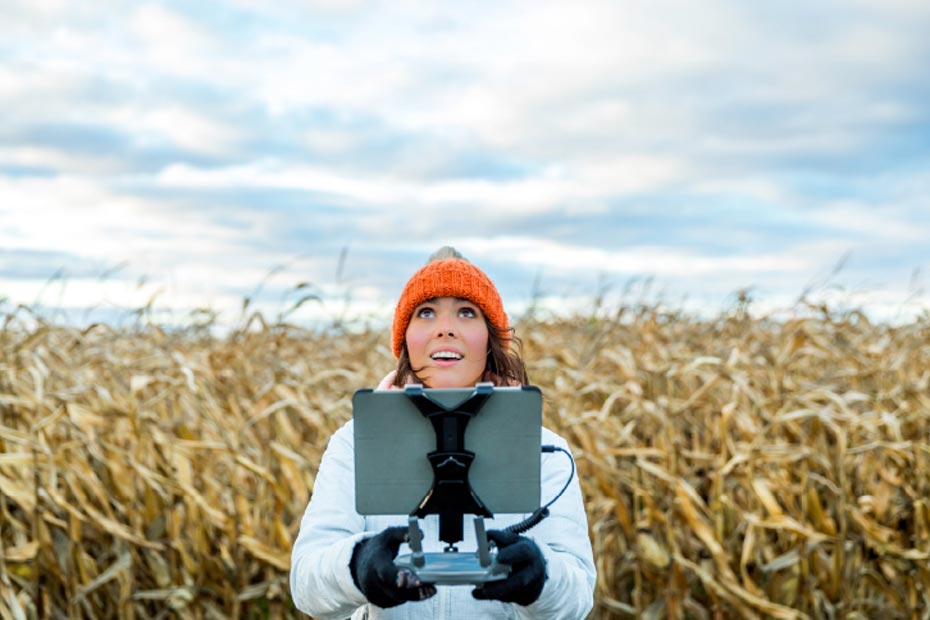At the December 4th edition of Ensemble Toronto speakers focused on “The Future of Truth” — in relation to media, politics and society as a whole. From the emergence of “Fake News” only a few short years ago, the speakers set out to explore “Truth” from several angles through thought-provoking (and at times terrifying) talks, and three primary questions emerged:
- How is truth defined?
- Whose truth is being told?
- How can we protect the truth?
What Is the Definition of Truth?
Kevin Keane, Founder and CEO of Brainsights, has set out to challenge our understanding — and definition — of the truth. Through brain scans, he and his team have been measuring the unconscious mind and its response to ads and content over the last seven years. “95 per cent of decision-making happens in the unconscious brain,” Keane told the Ensemble audience. By studying the unconscious, his team has been able to gain a deep understanding of people across cultures, classes, income levels, age and ethnicity, and identify how different types of audiences consume the same content.
For instance, they studied the brains of people in Spain, Germany and India, and measured how they responded to the same ad. The result? Vasty different unconscious reactions. They also measured four different responses to the final 2016 presidential debate — across women, men, 30+ and under 30 — and reactions varied significantly to the exact same information.
What does this mean? “Our unconscious biases are shaping our worldview,” Keane said. And truth is not simply a set of facts anymore. Rather, it’s fact PLUS our experience of the facts.
To achieve a purer version of truth, Keane encouraged practicing empathy, seeking out new ways of seeing things, and accepting uncertainty. “Lean in to the fact that we don’t know enough — that we don’t have complete control over the truth.”
Does the Storyteller Own the Truth?
There’s a real sense today that you don’t need to have all the facts to have a compelling platform. You just need to resonate with people’s emotions and shout the loudest.
So says Amy Davies, VP Client Strategy and Creative at Vice Media Group.
“Today’s younger generations (millennials and Generation Z) tend to actively search for the truth,” she said. 56 percent don’t trust corporations and 62 percent don’t trust leaders. So instead, they’re taking the search for truth and justice into their own hands.
The problem is finding the truth. As the most diverse generation in history (37 percent identify as people of colour), young people are seeking different viewpoints and more actively following individual creators.
“There is a disproportional representation of white people in the newsroom,” said Natasha Grzincic, Deputy Editor of Vice. Which therefore begs the question: Whose truth are we consuming today? Who is telling the story?
Vice has managed to gain the trust of younger audiences by finding the truths that aren’t being told elsewhere. “We find people who are rarely given the chance to tell their story and give them a voice,” said Josh Visser, Editorial Director.
By adding diversity to the newsroom, there is diversity in thought, message and focus — allowing more truths to emerge and access to more than one side of the story.
What Is Real, and What Is Fake?
“We are in the golden age of media manipulation.” This, according to Craig Silverman, Media Editor at Buzzed. “So many more people can participate — there are so many more voices and way more room for bad actors.”
For instance, everyday people are being given the opportunity to rent out their Facebook accounts. Fake news pages are rampant and attracting clicks (and therefore media buys). Product reviewers are being bribed and Twitter accounts can be bought in bulk. Considering 62 percent of younger audiences say that Social Media is their main source of news, these stats are concerning to say the least.
So how do we protect the truth, among the rampant fakeness out there?
“Citizens must reinvent how they consume and interact with information and the media — or risk losing touch with reality,” Silverman said. We all have to question our sources and challenge what we are seeing and reading.
We live in a polarized world — where some people believe everything they see, and others believe nothing… even credible news sources. While the nuances of truth were debated by a panel made up of Linday Finneran-Gringas, David Tsubouchi and Murray Simser at Ensemble X, one thing became clear. People need to think for themselves.
It takes a lot of work to find the truth, and it’s a joint effort across several groups: It’s the responsibility of individuals to actively look for the truth and challenge what they see; it’s the responsibility of corporations to buy media responsibly; and it’s the responsibility of the government to lead with integrity.
The truth is out there. We just need to work together to find it, share it, and ultimately protect it.
Join us at the next Ensemble event (Volume 11) — The Future of Food — which will b taking place March 5, 2020 at the WE Global Learning Centre. Exploring the challenges and moral dilemmas in the path to feeding a global population that’s just passed the 7 Billion mark, the event will satisfy promises thought providing conversation about this vital topic.
This article is intended as general information only and is not to be relied upon as constituting legal, financial or other professional advice. A professional advisor should be consulted regarding your specific situation. Information presented is believed to be factual and up-to-date but we do not guarantee its accuracy and it should not be regarded as a complete analysis of the subjects discussed. All expressions of opinion reflect the judgment of the authors as of the date of publication and are subject to change. No endorsement of any third parties or their advice, opinions, information, products or services is expressly given or implied by Royal Bank of Canada or any of its affiliates.



















